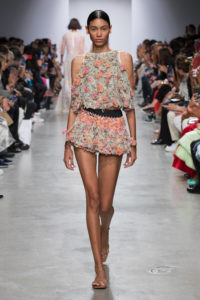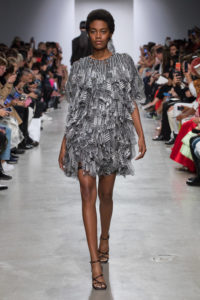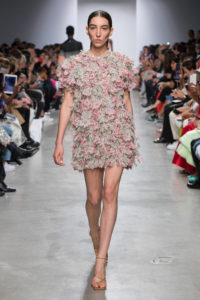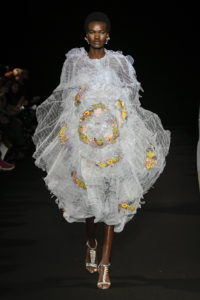The Delhi-based designer becomes the first Indian designer to showcase his collection at this prestigious fashion event, on the invitation of Chambre Syndicale de la Haute Couture.

Rahul Mishra made an entry into the hallowed club of couture designers such as Valentino, Iris van Herpen, Zuhair Murad, Balmain, Chanel, Dior, Maison Margiela and Schiaparelli, by becoming the first Indian to showcase his collection at the Paris Haute Couture Fashion Week on 23 January 2020 for spring couture.
Mishra, who has been exhibiting at the Paris Fashion Week since 2014, was invited by Chambre Syndicale de la Haute Couture, a prestigious governing body of the French fashion industry that dictates the line-up at couture
week, to showcase his collection at the prestigious haute couture week. Considered among the top three fashion weeks in the world, he was in the hallowed company of global fashion czars such as Valentino, Iris van Herpen,
Zuhair Murad, Balmain, Chanel, Dior, Maison Margiela and Schiaparelli. For recognition by the FHCM, a fashion house must show a consistent track record of being able to consistently create an original global voice.

His jungle-themed collection was inspired by the 2005 DreamWorks animation Madagascar, a movie he’s watched 35 times, Henri Rousseau’s painting The Dream, medieval Indian paintings and his recent visit to sustainable luxury resort SonevaFushi in the Maldives. Mishra took inspiration from “underwater landscapes and tropical flora, marked by their contrast with the polluted landscape of New Delhi”, a city he calls home. Mishra says, “The privilege of travel enables the genesis of fresh perspectives. On a recent trip to Soneva Fushi, as I submerged myself quite literally into an unfamiliar world, a series of stark realisations dawned upon me. Mesmerised by the million shades of blue, the ever-changing abstract shapes made up of a diaspora of fish, the alien-esque under-water foliage and the striking corals, it was a mammoth task to register the beauty unfolding before me — an experience that was equal parts surreal and humbling. I have explored the notions of a habitat enveloped in memories, the subtleties of nostalgia guiding my past collections. But the current reality of it all is daunting, to say the least. My four-year-old daughter, Aarna, longs for a clear blue sky as pollution levels in New Delhi are alarmingly high.”
The emphasis, Mishra says, is on tailoring and garments with interesting layers. His minimal collection is embellished with luminescent as fern-like fronds of foliage in shades of off-white, yellow and other soothing shades. The leaves on the hems of the gowns appeared like teaming coral reefs in vivid shades of yellow and pink.

He showcased dresses in long and voluminous shapes or as shifts, flecked by sequins and beads. They were teamed with long tailored coats with allover embroideries. Intricate, hand-cut appliquéd vines and birds unfolded across the dresses, the jackets and lehenga-inspired coats. “Entire ecosystems have been crafted out of delicately hand-embroidered flora and fauna. We have pushed to discover new frontiers in our exploration of three-dimensional embroidery that lends a distinct shape-shifting essence to the silhouette,” he says.
In an ivory gown, two fronds enveloped the body in what seems to be a verdant Rousseau tableau. Over 6,000 hours of embroidery and intricate beadwork has gone into creating the stunning gown which. The designer teamed his delicate couture pieces with two fine jewellery brands — Mehta & Sons and Anjali Bhimrajka Fine Jewels.
A favourite of actors such as Priyanka Chopra and Frieda Pinto the designer champions functional fashion crafted out of traditional Indian textiles. A proponent of ‘Made in India’ couture, his label features the finest of hand-
woven, hand-embroidered and handcrafted garments. With pieces that have taken more than 5,000 human hours to make, the collection marks a big leap for us as we establish our codes. The last seasons have witnessed a growth
of 50% in business with a drop of 10% in production numbers. We are reducing the quantity of clothes we produce while growing as a business that employs more than a thousand artisans from the Indian craft community.”
He believes fashion is among the polluting industries in the world and couture, which involves slower artisanal processes, is perfect for times like these. “My objective is to create jobs which help people in their villages; I take
work to them rather than calling them to work for me. If villages are stronger you will have a stronger country, a stronger nation, and a stronger world. My entire philosophy revolves around that. The product will go through
evolution — it will change, improve — but the philosophy is constant.”



